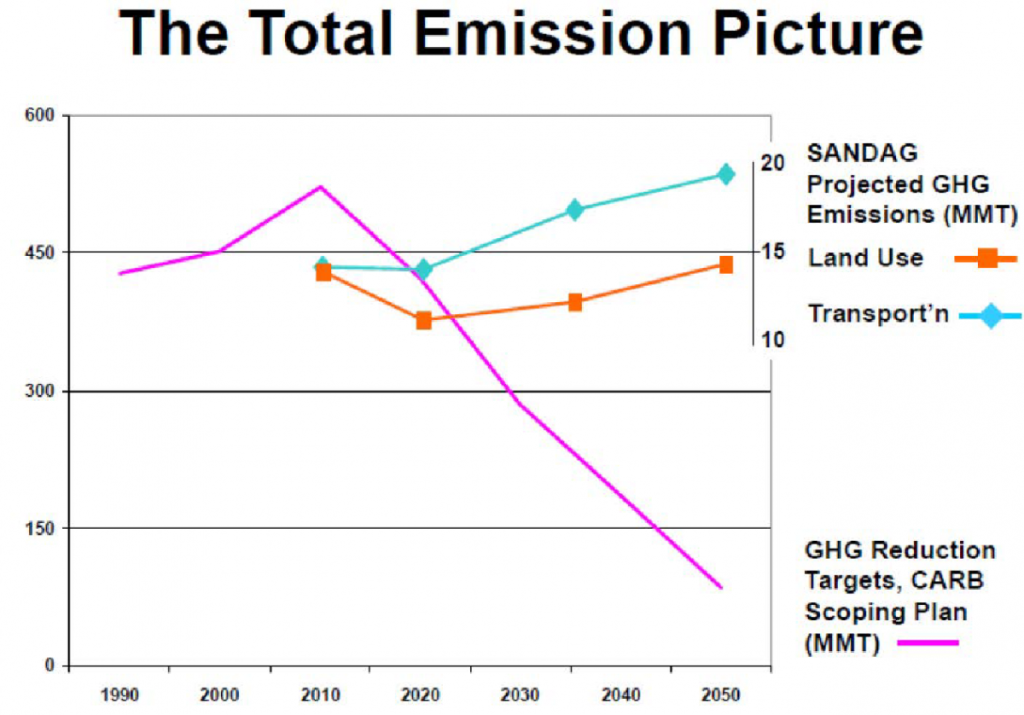California Supreme Court to Decide Major CEQA, Climate Change Case
Justices’ Latest Grant of Review Continues Supreme Court’s Focus on Environmental Law
To paraphrase former President Ronald Reagan, there they go again.
The California Supreme Court on Wednesday granted review in an important case at the intersection of the California Environmental Quality Act (CEQA) and one of the state’s most important climate change laws. The case, Cleveland National Forest Foundation v. San Diego Association of Governments, is the latest in an unprecedented series of CEQA cases taken up by the Supreme Court. It’s also the justices’ first opportunity to confront the important legal and policy issues presented by the landmark 2008 climate change legislation popularly known as SB 375.
SB 375, formally titled the Sustainable Communities and Climate Protection Act of 2008, for the first time links California regional transportation planning and funding with state land use regulation and planning–the ultimate goal being to reduce greenhouse gas (GHG) emissions from California’s transportation sector, the state’s single largest source of those emissions. The legislation does so by requiring each of the state’s regional transportation agencies to incorporate a “sustainable communities strategy” (SCS) into its periodically updated regional transportation plan. SB 375’s objective is to incentivize more sustainable land use and transportation practices, thereby reducing California’s aggregate GHG emissions.
The San Diego Association of Governments (SANDAG) was the first regional transportation agency in California to adopt an updated transportation plan with an SB 375-required SCS component. SANDAG did so after a lengthy regulatory process that included preparation of an environmental impact report (EIR) under CEQA to assess the overall environmental consequences of its proposed transportation plan and SCS. The regional plan and SCS that SANDAG ultimately approved, while projected to achieve short-term GHG emission reduction goals, does not meet those goals over the long term. Critically, however, the SANDAG EIR did not identify and address this inconsistency; nor did EIR focus on potential mitigation measures to address the projected environmental impacts of the regional plan’s GHG emissions.
Environmental organizations and housing advocates sued SANDAG, challenging the EIR’s adequacy under CEQA. California Attorney General Kamala Harris intervened in the litigation on behalf of the People of the State of California and in support of the plaintiffs, a controversial decision that dramatically raised the stakes and profile of the litigation.
 The trial court ruled in favor of the plaintiffs and Attorney General Harris, a development reported in an earlier post by Legal Planet colleague Ethan Elkind. SANDAG appealed, and a divided panel of the Court of Appeal affirmed, finding the EIR prepared by the agency in support of its regional transportation plan and SCS to be legally deficient in numerous respects. (Ethan did a nice job of covering that decision as well in another previous post.)
The trial court ruled in favor of the plaintiffs and Attorney General Harris, a development reported in an earlier post by Legal Planet colleague Ethan Elkind. SANDAG appealed, and a divided panel of the Court of Appeal affirmed, finding the EIR prepared by the agency in support of its regional transportation plan and SCS to be legally deficient in numerous respects. (Ethan did a nice job of covering that decision as well in another previous post.)
SANDAG then sought review from the California Supreme Court regarding a number of perceived flaws in the Court of Appeal’s 2014 opinion. All seven justices of the Supreme Court concurred in today’s decision to take up the case, but they limited review to a single issue which they reframed as follows:
Must the environmental impact report for a regional transportation plan include an analysis of the plan’s consistency with the greenhouse gas emission reduction goals reflected in Executive Order No. S-3-05 to comply with the California Environmental Quality Act?
(Executive Order No. S-3-05, issued by former Governor Schwarzenegger in 2005, establishes the GHG reduction targets for 2020 and 2050 that SB 375 is designed to help achieve on a statewide basis.)
The California Supreme Court’s grant of review in Cleveland National Forest Foundation is noteworthy for several reasons:
- First, it continues and underscores the Supreme Court’s continuing interest in–some would say obsession with–environmental law in general and CEQA in particular. (I commented on this noteworthy trend in a recent post.) The justices’ grant of review again brings the number of CEQA cases pending before the Court to nine and the number of pending environmental cases overall to 20–both records in California Supreme Court history. Cleveland National Forest Foundation, moreover, is the second currently pending case before the justices to involve the intersection of CEQA and climate change, joining California Building Industry Assn. v. Bay Area Air Quality Management Dist. (which I discussed in the above-referenced, earlier post).
- Cleveland National Forest Foundation, while a CEQA case, also represents the first opportunity for the Supreme Court to address and apply SB 375, an important and particularly innovative component of California’s suite of laws designed to reduce the state’s aggregate GHG emissions. The Court of Appeal decision in the case [now vacated as to the issue the Supreme Court will review] gave an expansive interpretation to SB 375 and the long-term objectives the legislation is designed to achieve. It will be interesting to see if the Supreme Court applies a similarly muscular construction of SB 375 or, alternatively, adopts the more technical and limited interpretation of the legislation advanced by SANDAG.
- Finally, another reason that watching the Cleveland National Forest Foundation case play out in the Supreme Court will be fascinating spectator sport is that it involves a veritable Super Bowl of CEQA advocacy. The public interest plaintiffs are represented by managing partner Rachel Hooper of Shute, Mihaly & Weinberger, one of the very best environmental and land use law firms in California. Attorney General Harris, aligning herself with plaintiffs, is ably represented in the case by Principal Deputy State Solicitor General Janill Richards, herself a veteran, accomplished environmental litigator. And SANDAG’s counsel before the Supreme Court is Margaret Sohagi, one of California’s most experienced and respected CEQA experts. To say that this key California Supreme Court case will be ably litigated on all sides is a serious understatement.
Reader Comments
2 Replies to “California Supreme Court to Decide Major CEQA, Climate Change Case”
Comments are closed.






Richard Frank said;
“…….SB 375, formally titled the Sustainable Communities and Climate Protection Act of 2008, for the first time links California regional transportation planning and funding with state land use regulation and planning–the ultimate goal being to reduce greenhouse gas (GHG) emissions from California’s transportation sector, the state’s single largest source of those emissions….”
Dear Mr. Frank,
Do you know how many tons of carbon dioxide emissions would be reduced by successful implementation of SB 375? Does anyone really care? All of the tons of carbon dioxide emissions reduced by SB 375 plus all the other tons of reduction in California, altogether would have no measurable effect, not even the slightest perceptible effect, on the global climate anywhere on earth and especially in California.
We are too small, all of us acting together are minuscule, insignificant, inconsequential, nothing at all – so why bother with SB 375 and other such nonsense. We can safely and intelligently ignore and forget about the climate movement. We shall adapt and accomplish the same objective, and have more peace during our brief sojourn in this world.
The earth’s climate has no perception of humanity, the climate is not concerned about our diminutive human race. Climate cannot be mitigated, modulated or controlled by humans. Climate mitigation scams such as SB 375 are delusional claptrap rubbish. A better solution is to relax, adapt, be happy, don’t waste your life mired in incoherent gibberish.
I think Supreme court does not curve climate change Case as it consume time only.